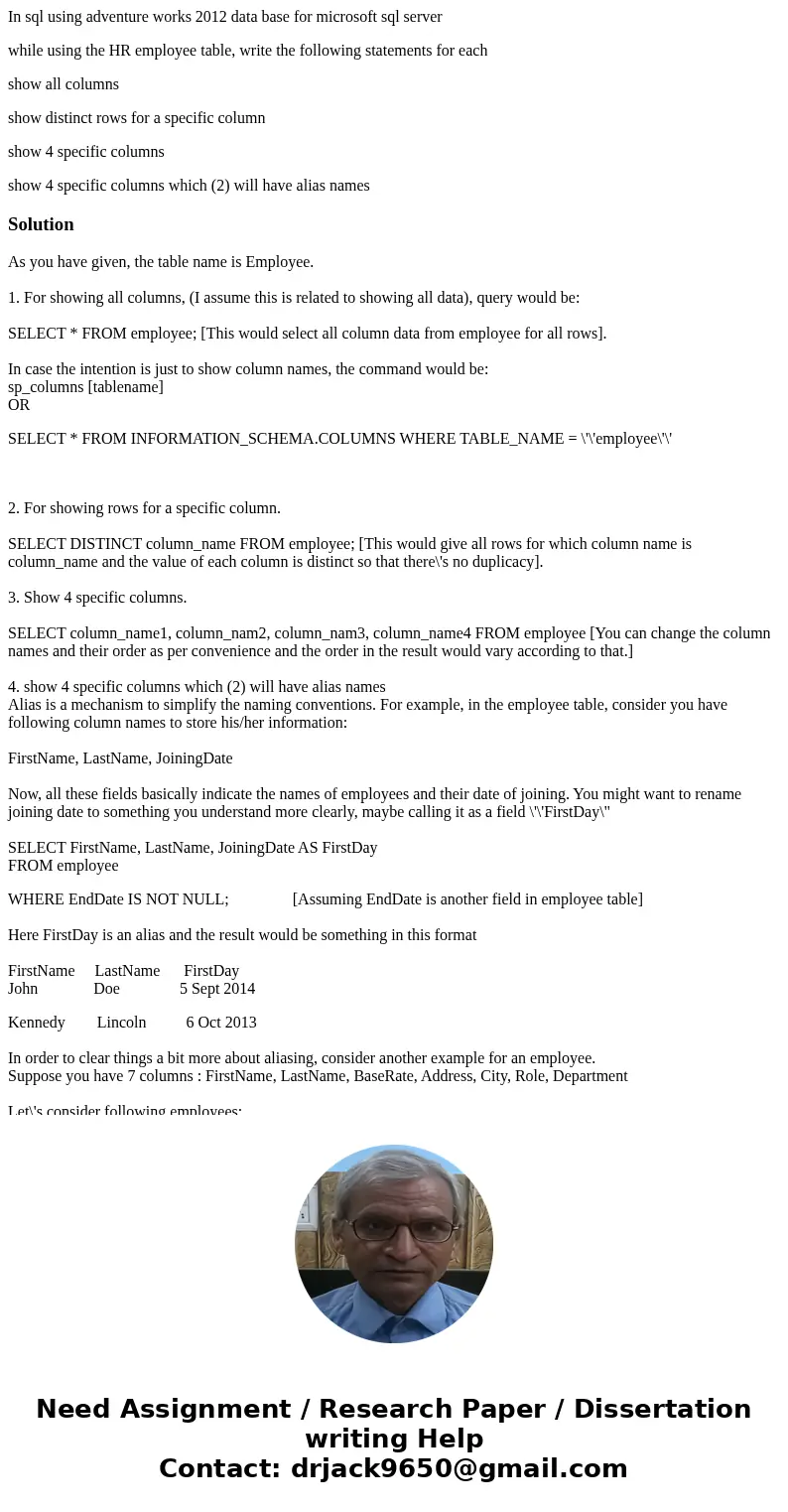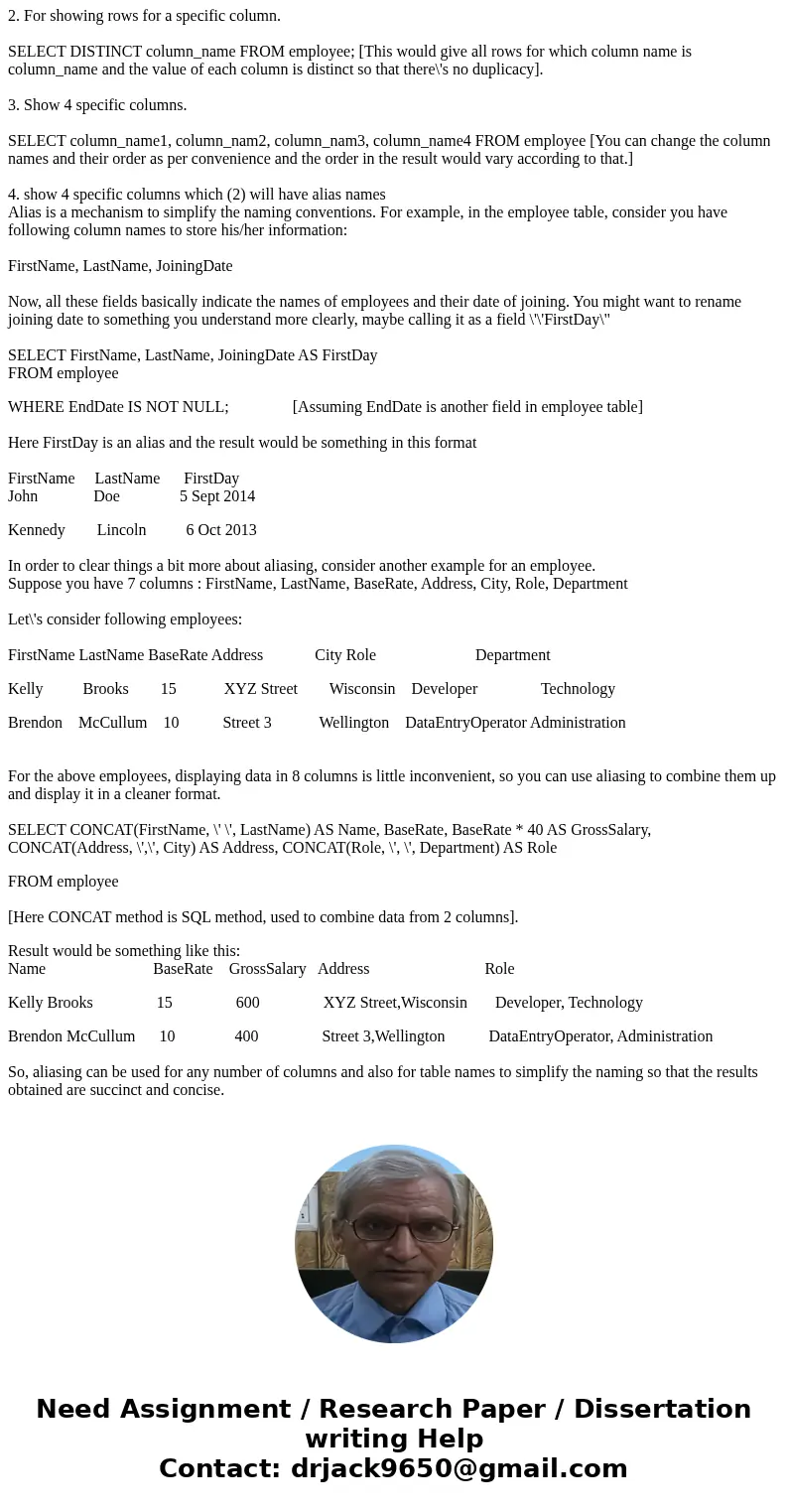In sql using adventure works 2012 data base for microsoft sq
In sql using adventure works 2012 data base for microsoft sql server
while using the HR employee table, write the following statements for each
show all columns
show distinct rows for a specific column
show 4 specific columns
show 4 specific columns which (2) will have alias names
Solution
As you have given, the table name is Employee.
1. For showing all columns, (I assume this is related to showing all data), query would be:
SELECT * FROM employee; [This would select all column data from employee for all rows].
In case the intention is just to show column names, the command would be:
sp_columns [tablename]
OR
SELECT * FROM INFORMATION_SCHEMA.COLUMNS WHERE TABLE_NAME = \'\'employee\'\'
2. For showing rows for a specific column.
SELECT DISTINCT column_name FROM employee; [This would give all rows for which column name is column_name and the value of each column is distinct so that there\'s no duplicacy].
3. Show 4 specific columns.
SELECT column_name1, column_nam2, column_nam3, column_name4 FROM employee [You can change the column names and their order as per convenience and the order in the result would vary according to that.]
4. show 4 specific columns which (2) will have alias names
Alias is a mechanism to simplify the naming conventions. For example, in the employee table, consider you have following column names to store his/her information:
FirstName, LastName, JoiningDate
Now, all these fields basically indicate the names of employees and their date of joining. You might want to rename joining date to something you understand more clearly, maybe calling it as a field \'\'FirstDay\"
SELECT FirstName, LastName, JoiningDate AS FirstDay
FROM employee
WHERE EndDate IS NOT NULL; [Assuming EndDate is another field in employee table]
Here FirstDay is an alias and the result would be something in this format
FirstName LastName FirstDay
John Doe 5 Sept 2014
Kennedy Lincoln 6 Oct 2013
In order to clear things a bit more about aliasing, consider another example for an employee.
Suppose you have 7 columns : FirstName, LastName, BaseRate, Address, City, Role, Department
Let\'s consider following employees:
FirstName LastName BaseRate Address City Role Department
Kelly Brooks 15 XYZ Street Wisconsin Developer Technology
Brendon McCullum 10 Street 3 Wellington DataEntryOperator Administration
For the above employees, displaying data in 8 columns is little inconvenient, so you can use aliasing to combine them up and display it in a cleaner format.
SELECT CONCAT(FirstName, \' \', LastName) AS Name, BaseRate, BaseRate * 40 AS GrossSalary, CONCAT(Address, \',\', City) AS Address, CONCAT(Role, \', \', Department) AS Role
FROM employee
[Here CONCAT method is SQL method, used to combine data from 2 columns].
Result would be something like this:
Name BaseRate GrossSalary Address Role
Kelly Brooks 15 600 XYZ Street,Wisconsin Developer, Technology
Brendon McCullum 10 400 Street 3,Wellington DataEntryOperator, Administration
So, aliasing can be used for any number of columns and also for table names to simplify the naming so that the results obtained are succinct and concise.


 Homework Sourse
Homework Sourse